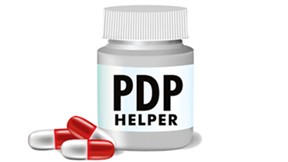by Dr Al Sears
The war on traditional foods has taken a disastrous new turn, one that I call an abomination. Big Agra markets their processed “meat alternatives” as a healthier solution to what nature provides.
Plant-based products – marketed as steaks, burgers, chicken patties, and eggs – now appear on restaurant menus and supermarket shelves everywhere. Big Agra wants you to believe these “meat alternatives” are healthier than what nature provides. They’re not.
By definition, plant-based “egg and meat products” are processed, unnatural fake foods. They’re made from more than 50 ingredients that are decidedly unrelated to the animals they mimic. Most plant-based products also contain soy and seitan, which gives them their “authentic” texture.
Despite the media and marketing hype around soy being a source of good health, the GMO frankenfood is one of the worst plant foods you can possibly consume.
Soy is loaded with estrogen mimickers that cause erectile dysfunction, man boobs, loss of bone and muscle mass, and at least half a dozen different types of cancer. Soy also impairs insulin secretion and might actually cause diabetes. And new studies reveal that it may even be connected to dementia and mental illness.1,2 Meanwhile, seitan – also known as “wheat meat” – is a starchy, grain-based concoction made from gluten and is highly processed.
And as you know, I’ve been recommending that you avoid grain-based foods for more than 30 years. If you followed a grain-based diet like the USDA recommends, you’d be diseased, overweight, and prematurely old in no time at all.
These products, despite clever marketing, are anything but good for you. Soy and seitan, while horrible for your health, are at least real foods. The other ingredients hiding in your veggie burger are anything but…
To get these ultra-processed meat-alternatives to look and taste like real meat means they have a whole lot of chemical additives. Here’s a small example of what’s hiding in your plant “burger:”
- Tertiary butylhydroquinone. This synthetic preservative is linked to cancer, vision loss, liver enlargement, and convulsions in lab animals. Research suggests that in humans it damages the immune system, leaving you vulnerable to disease.3
- Propylene glycol. This water-absorbing synthetic substance is often used in the cosmetic industry. But it’s also an ingredient in e-cigarettes and antifreeze.
- Magnesium carbonate. Used as a food additive to prevent caking and retain color, magnesium carbonate is also used in flooring, fireproofing, and fire-extinguishing compounds. Too much of it causes a laxative effect.
Makers of meat alternatives point to studies that declare these compounds are safe. But here’s what they fail to mention…
Independent research has discovered the “studies” have been funded or commissioned by the very same companies that manufacture these fake foods.4
Of course, you’ll never hear from the FDA or the mainstream media that meat alternatives are an unhealthy choice. They’re still pushing the big lie that cholesterol is bad for your heart and your health. As a regular reader, you know I consider the war on cholesterol one of the greatest health food cons of all time.
Despite misinformation repeated endlessly by mainstream doctors, the media, and Big Agra, trying to remove animal fats and cholesterol from your diet is a bad idea. A meat-based diet is what made us the humans we are today.
It’s grains, carbohydrates, and processed foods that cause excessive weight gain, inflammation, and chronic disease – not dietary fat.
Where’s The Grass-Fed Beef?
I consider grass-fed meat to be perhaps the healthiest food you can eat. Compared to grain-fed animals, products from grass-fed animals have 10 times more omega-3 fats, more vitamins B, E, D, and K2, more CoQ10 and zinc and more antioxidants like glutathione and superoxide dismutase (SOD).5
But don’t be fooled by Big Food fakes. To make sure you’re getting the real deal, here’s what to look for:
Make sure the label says “100% grass-fed and grass-finished.” And watch out for labels that only promise “natural,” “organic,” or “pasture raised.” Chances are those cattle were “finished” in a feedlot eating grains, soy, and food waste byproducts. Check out EatWild.com, a national directory of pasture-based livestock producers, and find one in your area you can reply on.
Look for third-party certification. Groups like AGA, A Greener World, or the Global Animal Partnership offer certification labels you can check to verify it is real grass-fed beef.
Choose bison meat. You have another choice when it comes to meat. I’m talking about all American bison meat. Or as I call it, the other red meat. All bison are grass-fed. In fact, this animal would rather starve than eat corn.
To Your Good Health,
Al Sears, MD, CNS
References:
- Deol P, et al. “Soybean Oil Is More Obesogenic And Diabetogenic Than Coconut Oil And Fructose In Mouse: Potential Role For The Liver.” PLoS One. 2015 Jul 22;10(7):e0132672.
- Deol P, et al. “Dysregulation Of Hypothalamic Gene Expression And The Oxytocinergic System By Soybean Oil Diets In Male Mice.” Endocrinology. 161(2). 2020;161(2):bqz044.
- Zagorski J, et al. “Differential Effects Of The Nrf2 Activators Tbhq And CDDO-Im On The Early Events Of T Cell Activation.” Biochem Pharmacol. 2018 Jan;147:67-76.
- Santo R, et al. “Considering Plant-Based Meat Substitutes And Cell-Based Meats: A Public Health And Food Systems Perspective.” Frontiers In Sustainable Food Systems. 2020.
- Daley CA, et al. “A Review Of Fatty Acid Profiles And Antioxidant Content In Grass-Fed And Grain-Fed Beef.” Nutr J. 2010;9:10.
 The following are some tips to help us do an accurate search on your behalf for the next year’s Prescription Drug Plans (PDP). Our goal is to find the PDP that will be most suitable for you.
The following are some tips to help us do an accurate search on your behalf for the next year’s Prescription Drug Plans (PDP). Our goal is to find the PDP that will be most suitable for you.  by Lance D Reedy
by Lance D Reedy The Annual Election Period (AEP) for 2024 Plans
The Annual Election Period (AEP) for 2024 Plans